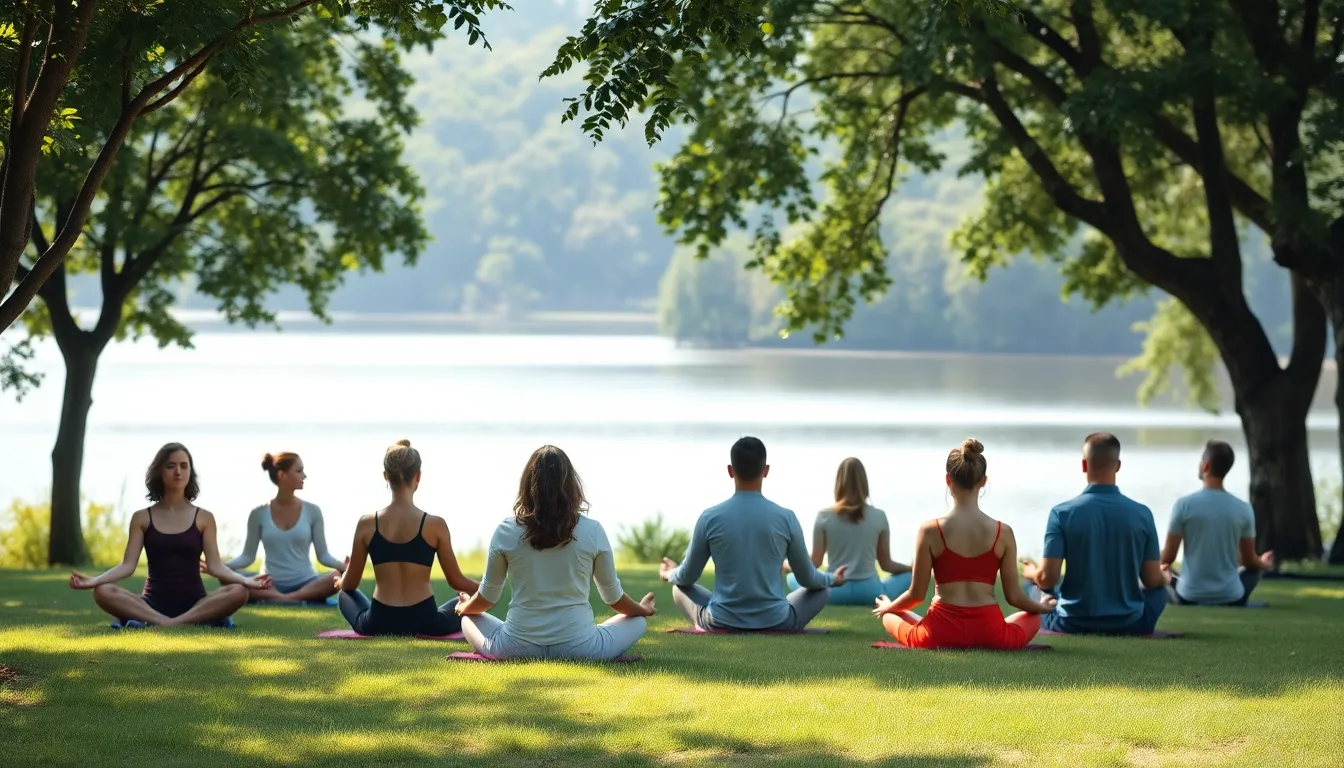In today’s fast-paced world, finding a moment of peace can feel like searching for a unicorn in a haystack. Enter mindfulness exercises: the magical toolbox for calming the chaos. These simple yet powerful techniques help you tune in to the present, reduce stress, and maybe even discover that elusive inner zen.
What Are Mindfulness Exercises?
Mindfulness exercises consist of various practices designed to enhance awareness of the present moment. These techniques help individuals cultivate a non-judgmental awareness of their thoughts, feelings, and surroundings. Practicing mindfulness enhances focus and can contribute to reducing stress and anxiety levels.
Breathing exercises serve as a foundational mindfulness practice. Participants often practice deep breathing, which encourages a calm state of mind. Body scans involve mentally scanning one’s body from head to toe, identifying areas of tension and promoting relaxation.
Guided meditations offer structured paths to mindfulness. In these sessions, individuals listen to a narrator, allowing them to focus on specific themes such as gratitude or self-compassion. Journaling also serves as an effective mindfulness exercise. Writing about one’s thoughts and feelings encourages reflection and can lead to insights about personal experiences.
Engaging with nature acts as another valuable mindfulness practice. Spending time outdoors fosters a connection with the environment, allowing individuals to immerse themselves in sights and sounds. Mindful walking emphasizes paying attention to each step, transforming a simple activity into a meditative experience.
Mindfulness exercises can be practiced individually or in groups. Group settings often provide support and encouragement, making it easier for participants to stay committed to their practice. Consistent practice enhances the overall effectiveness of these techniques, leading to profound changes in awareness and emotional resilience.
Benefits of Mindfulness Exercises

Mindfulness exercises offer significant advantages that enhance overall well-being. These practices contribute to mental clarity and emotional stability.
Mental Health Improvements
Improved mental health benefits stem from engaging in mindfulness activities. They reduce symptoms of anxiety and depression, providing relief to individuals. Studies show meditation practices, like guided visualizations, lower cortisol levels, promoting a sense of calm. Participants often report increased emotional resilience and better stress management skills. Regular practice enhances self-awareness, allowing individuals to respond thoughtfully to life’s challenges. Enhanced focus and concentration also emerge, leading to better productivity and lower levels of distraction.
Physical Health Benefits
Physical health gains are evident through consistent mindfulness exercises. They lower blood pressure and improve heart rate variability, translating into better cardiovascular health. Research highlights the correlation between mindfulness and improved immune function. Many find that mindfulness can reduce chronic pain by changing the brain’s response to pain signals. Engaging with nature during mindfulness activities fosters a connection that complements physical well-being. Regular practice not only promotes relaxation but also aids in better sleep patterns, essential for recovery and health.
Types of Mindfulness Exercises
Mindfulness exercises are diverse, catering to different preferences and needs. They include techniques like breathing exercises, body scans, and mindful walking.
Breathing Techniques
Breathing techniques center around focused breathing patterns to promote relaxation. Practitioners engage in deep inhalation and slow exhalation, often using counts to enhance focus. Techniques include diaphragmatic breathing, where one breathes deeply into the abdomen, and box breathing, which consists of inhaling for four counts, holding for four, exhaling for four, and pausing for four. These exercises reduce stress and improve mental clarity by anchoring awareness to the breath. Breathing practices benefit both mental and physical health, making them foundational to mindfulness.
Body Scan Meditation
Body scan meditation promotes awareness of bodily sensations from head to toe. Participants lie comfortably, directing attention to each body part systematically. They observe sensations—tightness, warmth, or relaxation—without judgment. This practice enhances self-awareness while encouraging a deeper connection to physical existence. Body scan meditation helps reduce anxiety and fosters acceptance of one’s emotions and sensations. Regular practice contributes to enhanced relaxation and stress relief, providing significant benefits in achieving mindfulness.
Mindful Walking
Mindful walking integrates awareness into the act of walking. Practitioners stroll slowly, focusing on each step and the sensations of contact with the ground. Engaging with the environment, they take note of sounds, smells, and sights. This practice connects individuals to their surroundings and enhances the experience of movement. Mindful walking can occur indoors or outdoors, offering flexibility in practice settings. Regularly practicing mindful walking fosters a sense of tranquility while promoting physical health and enhancing emotional well-being.
How to Incorporate Mindfulness Exercises Into Your Daily Life
Mindfulness exercises can seamlessly fit into daily routines, enhancing overall well-being. Practitioners can start by identifying specific times during the day for these activities.
Creating a Routine
Establishing a consistent schedule enables practitioners to engage in mindfulness regularly. Mornings offer an ideal opportunity for a few minutes of breathing exercises. Afternoon breaks can serve as reminders to practice body scans. Evening routines may include guided meditations to wind down before sleep. Keeping sessions short at first helps ease into the practice. Gradually increasing duration as comfort grows promotes deeper engagement.
Using Apps and Resources
Various apps provide guided mindfulness exercises to support practice. Sessions track individual progress and offer reminders for daily engagement. Popular choices like Headspace or Calm feature diverse resources, including meditation timers, mindful walking prompts, and journaling techniques. Online platforms like YouTube also offer free guided exercises, helping users explore different practices. Accessing these tools fosters a structured approach to mindfulness and encourages daily commitment.
Mindfulness exercises offer a pathway to greater peace and emotional well-being in today’s hectic world. By embracing practices like breathing techniques and mindful walking individuals can cultivate a deeper awareness of the present moment. This not only alleviates stress but also enhances overall health.
Incorporating mindfulness into daily routines can lead to lasting benefits. With consistent practice individuals may find improved mental clarity and emotional resilience. As they explore various exercises they’ll likely discover which methods resonate most with them. Making mindfulness a regular part of life can transform their experience and foster a profound sense of tranquility.





